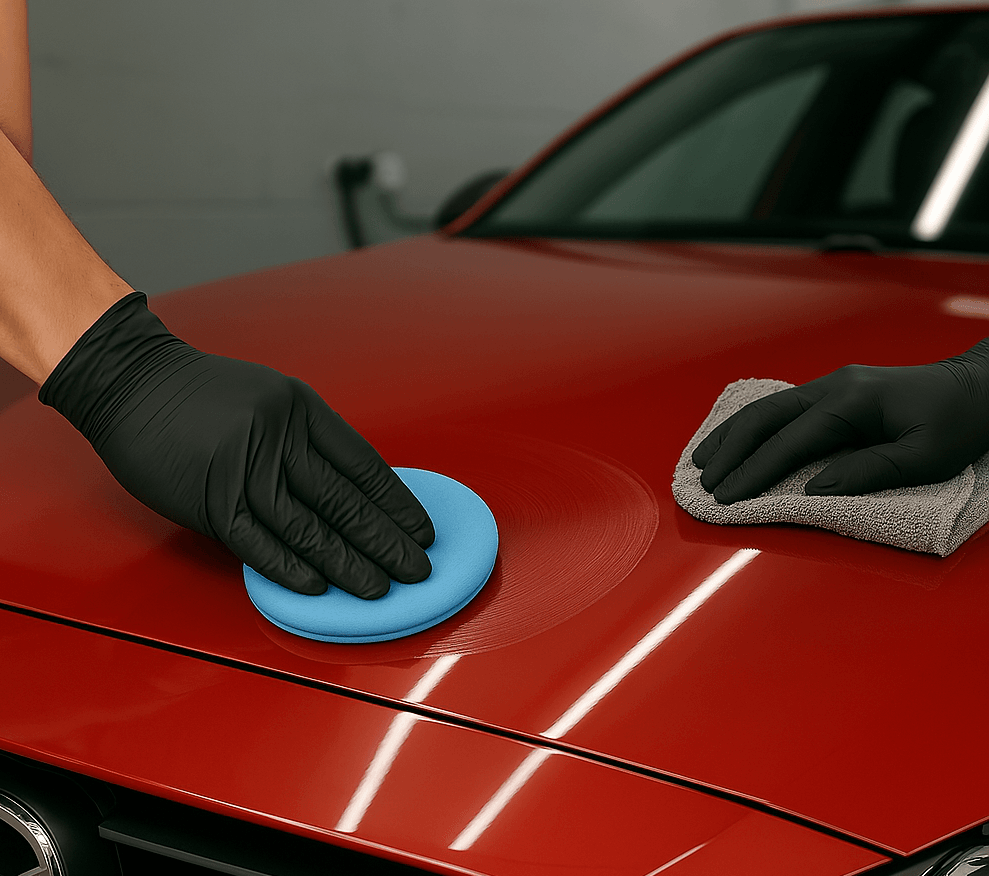
How to Protect Your Car's Paint
Share
Your car’s paint doesn’t just make it look good—it’s also its first line of defense against rust, dirt, and the elements. Whether you drive a brand-new ride or a beloved older model, maintaining the exterior can dramatically boost its resale value and longevity. Here’s how you can protect your car’s paint like a pro.
1. Wash Regularly (But the Right Way)
Frequent washing prevents grime, bird droppings, tree sap, and pollutants from eating away at your paint. But avoid automatic car washes with abrasive brushes. Instead:
- Use a pH-balanced car shampoo such as our High Gloss Ceramic Shampoo.
- Wash with a microfiber mitt and two buckets (one for soapy water, one for rinsing).
- Dry with a clean microfiber towel to avoid water spots.
2. Apply a High-Quality Wax or Sealant
Wax creates a protective barrier between your paint and environmental contaminants.
- Carnauba wax gives a deep shine but lasts only a few months.
- Paint sealants and ceramic coatings offer longer protection, sometimes up to a year or more.
For best results, apply wax every 3–4 months, or follow the product’s guidelines.
3. Use a Ceramic Coating for Long-Term Protection
Ceramic coatings are a step above wax:
- They chemically bond with your car’s paint.
- Offer superior hydrophobic (water-repelling) properties.
- Protect against UV rays, minor scratches, and chemical stains.
Though pricier and more labor-intensive to apply, they can protect your paint for up to 2–5 years.
4. Park in the Shade (Whenever Possible)
UV rays fade and oxidize paint over time. If you can:
- Park in a garage or carport.
- Use shaded parking spots.
- Consider a car cover if covered parking isn't available.
5. Invest in a Car Cover
A car cover protects against:
- Sun damage
- Dust and bird droppings
- Tree sap and rain
Choose a cover that fits well and is made of breathable, paint-safe materials.
6. Avoid Parking Under Trees
While shade is good, trees bring problems:
- Sap is extremely sticky and damaging.
- Birds perch in trees and leave droppings.
- Falling branches or acorns can dent and scratch.
If you must park under trees, clean your car frequently and consider a cover.
7. Fix Paint Chips and Scratches Promptly
Tiny chips may seem harmless, but they expose metal to moisture, leading to rust.
- Use touch-up paint for small chips.
- Address deep scratches with professional help.
The sooner you fix them, the less damage they cause.
8. Use Paint Protection Film (PPF)
For high-traffic areas like bumpers, hoods, and mirrors:
- PPF is a clear, self-healing film that protects against rock chips, bugs, and road debris.
- It’s nearly invisible and can last 5–10 years.
Great for those who drive long distances or on gravel roads.
9. Don’t Let Bird Droppings or Bugs Sit
Bird droppings are acidic and can burn into your clear coat within hours. Bugs can be just as damaging.
- Remove them quickly with a dedicated bug and tar remover.
- Always follow up with a rinse or wash.
10. Avoid Using Harsh Chemicals or Household Cleaners
Using dish soap or other household cleaners strips wax and can damage your paint.
- Always use products formulated for automotive paint.
- Test new products in a small area first.
Protecting your car’s paint doesn’t require expensive tools—just consistency, good habits, and the right products. A well-maintained exterior doesn’t just turn heads—it preserves your vehicle’s value and keeps it looking new for years to come.
